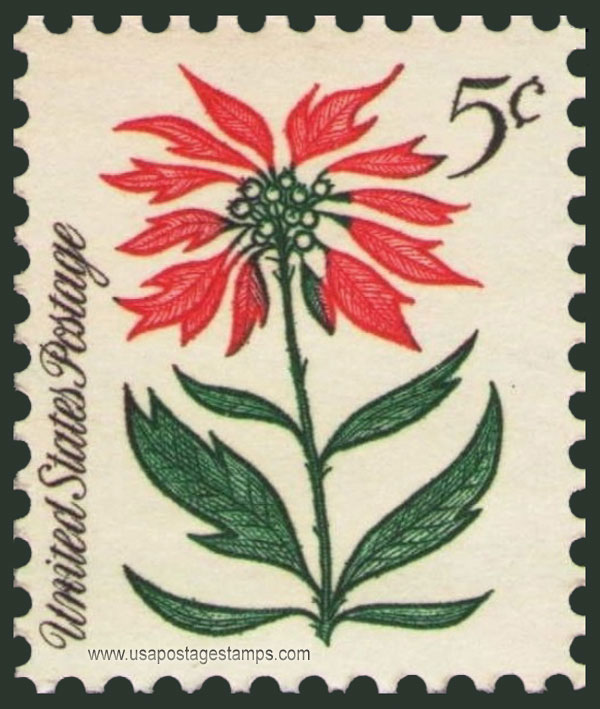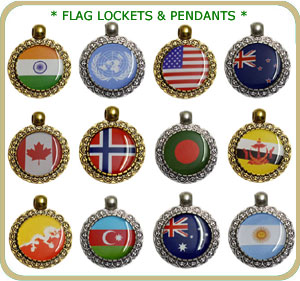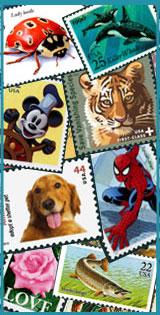US 1964 Christmas ; Poinsettia (Euphorbia pulcherrima) 5c. Scott. 1256a

Series: Christmas 1964 Issue
Stamp details: Poinsettia (Euphorbia pulcherrima)
Issued date: 10-11-1964 (dd/mm/yyyy)
Face value: 5c.
Emission: Commemorative
Catalogue No:-
Scott (USA): 1256a
Michel (Germany): 871y
Dimensions (height x width):
26mm x 22mm
Printer: Bureau of Engraving and Printing
Print Method: Giori Press
Stamp Colors: Green, Carmine and Black
Perforation: Perf 11 x 11
Paper: Tagged
Themes: Christmas, Flowers, Leaves, Plants
Stamp details: Poinsettia (Euphorbia pulcherrima)
Issued date: 10-11-1964 (dd/mm/yyyy)
Face value: 5c.
Emission: Commemorative
Catalogue No:-
Scott (USA): 1256a
Michel (Germany): 871y
Dimensions (height x width):
26mm x 22mm
Printer: Bureau of Engraving and Printing
Print Method: Giori Press
Stamp Colors: Green, Carmine and Black
Perforation: Perf 11 x 11
Paper: Tagged
Themes: Christmas, Flowers, Leaves, Plants
Description: The poinsettia (Euphorbia pulcherrima) is a commercially important plant species of the diverse spurge family (Euphorbiaceae). Indigenous to Mexico and Central America, the poinsettia was first described by Europeans in 1834. It is particularly well known for its red and green foliage and is widely used in Christmas floral displays. It derives its common English name from Joel Roberts Poinsett, the first United States Minister to Mexico, who is credited with introducing the plant to the US in the 1820s. Poinsettias are shrubs or small trees, with heights of 0.6–4 m (2.0–13.1 ft). Though often stated to be highly toxic, the poinsettia is not dangerous to pets or children. Exposure to the plant, even consumption, most often results in no effect, though it can cause nausea, vomiting, or diarrhea.
Source: en.wikipedia.org/wiki/Poinsettia
Source: en.wikipedia.org/wiki/Poinsettia




